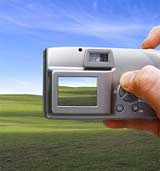 A new technique will help identify a digital photo that matches the camera used to take it, similar to matching a bullet to a gun.
A new technique will help identify a digital photo that matches the camera used to take it, similar to matching a bullet to a gun.
This technique will assist investigators in obtaining evidence to convict individuals possessing illegal digital photos (such as child pornography) that originated from their own camera.
“When a suspect is arrested with photos on their computer and also owns a digital camera, the common defense is often that those photos were processed on a computer or downloaded from the Internet,” said Dr. Jessica Fridrich, an assistant professor of electrical and computer engineering at Binghamton University in New York State.
With this new technique, it is possible to accurately determine that these photos were indeed produced by the camera associated with the suspect.
Previously, forensic scientists could establish a link between printed photos and the camera used through analog techniques. For example, they could compare distinctive scratches on the film negative with the mechanical parts of that film camera.
However, until now, they had not found an advanced, cost-effective, and reliable method to identify the subtle scratches on digital photos and videos produced randomly by a specific camera.
It turns out that these scratches—created by dust on the lens, optical interference, and natural fluctuations among pixels—are recorded on the camera’s image sensor as a unique noise pattern.
Noise Pattern Extraction
To determine the “noise pattern” produced by a specific digital camera, Fridrich and her team selected 320 images generated from 9 different cameras. They loaded the photos into a computer and used specialized software to analyze the images pixel by pixel.
By assigning values to the fluctuations among pixels, or the noise pattern, Fridrich created a unique “digital fingerprint” for each camera.
Next, the research team used mathematical correlation processing to compare these digital fingerprints with noise patterns from thousands of other images taken by the same 9 cameras. The greater the correlation, the more likely the photo was produced by a specific camera.
In the Forensic Laboratory
To apply this technique in real-world situations, experts will take a group of digital photos from the suspect camera to generate its “digital fingerprint.”
They will then isolate the digital fingerprints of the illegal photos and compare them with the camera’s digital fingerprint. The greater the match, the stronger the evidence for conviction.
In Fridrich’s experiments, thousands of images were accurately matched to the camera with no errors, even when the images had been compressed or resized.
T. An


















































